TRADITION & INSIGHT EXHIBITION.
JJ ART. 16 Insa-dong 9-gil, Jongno-gu, Seoul. Baekak Museum of Art, 1st floor. May 23, to June 23, 2017.
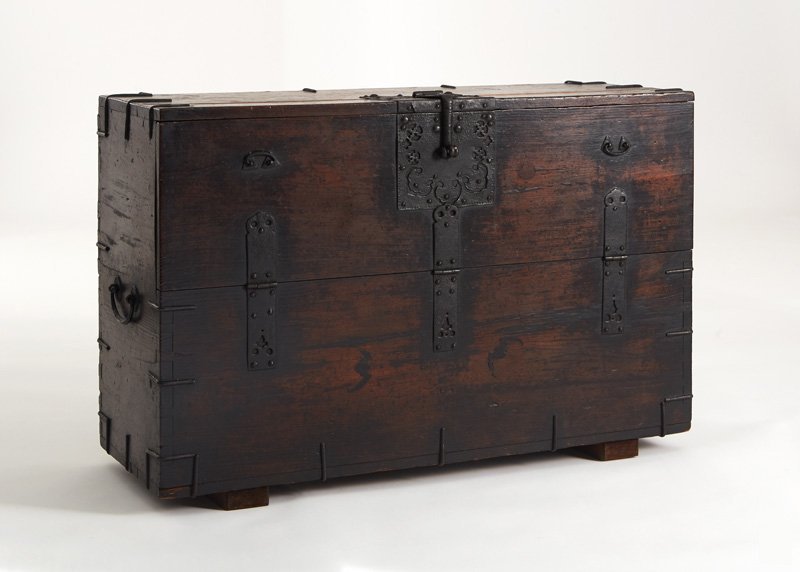
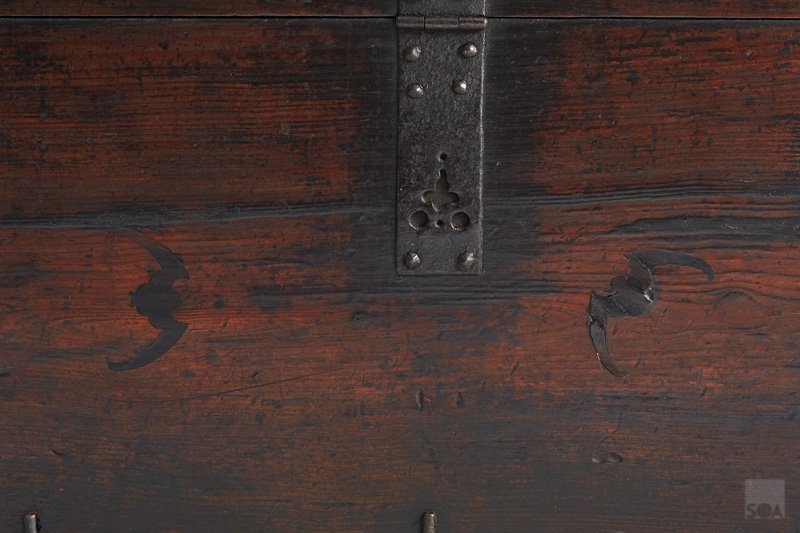
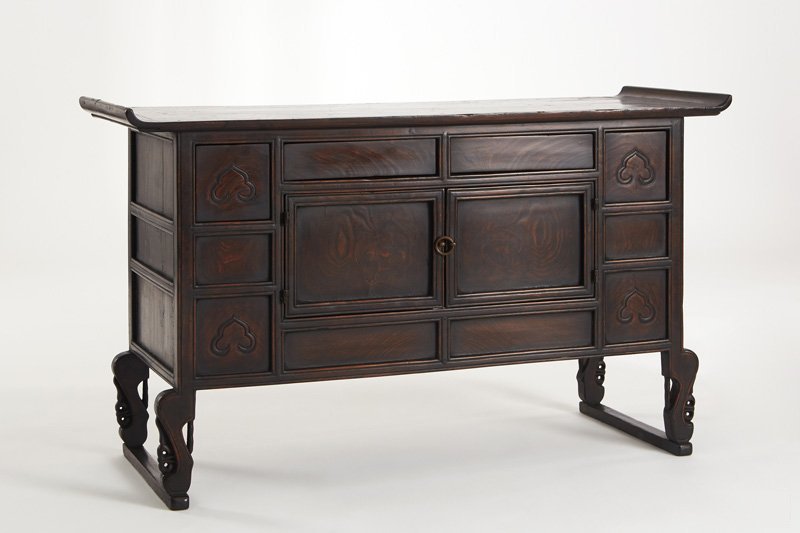

H. 99cm W. 98cm, D. 39cm. Pine tree, pear tree, paulownia tree

H.165cm, W. 47cm, D. 36cm. Zelkova tree, bamboo tree, paulownia tree
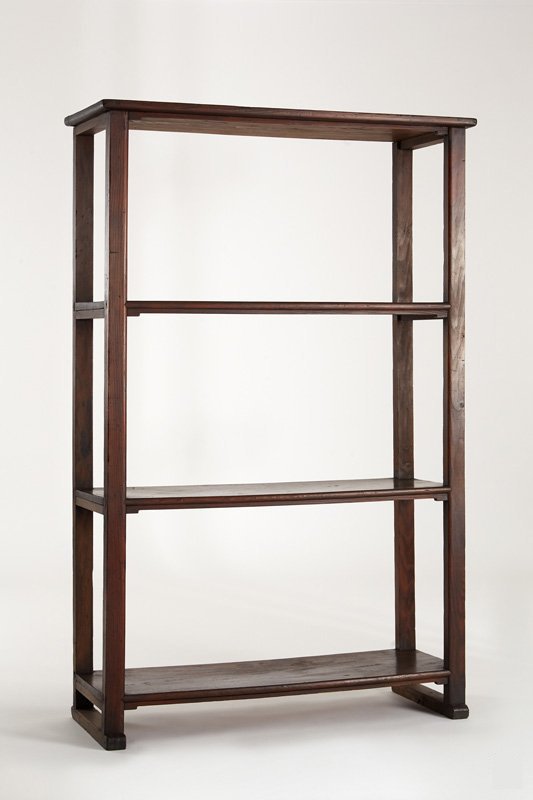
H. 152cm, W. 99cm, D. 37cm. Pine tree


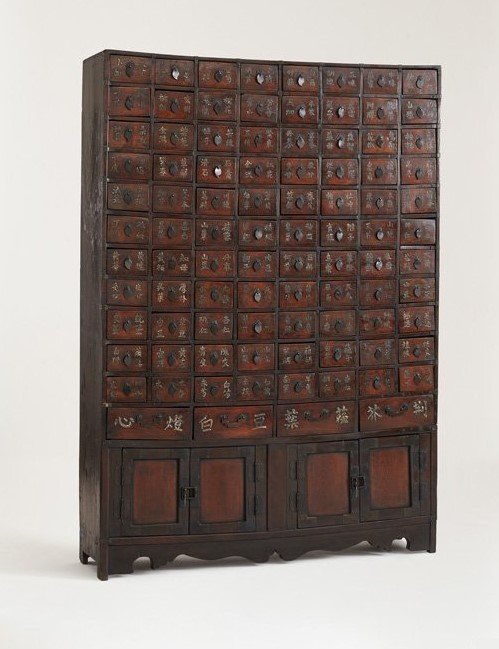
H.150cm, W. 107cm, D. 29cm. Pine tree, zelkova tree.
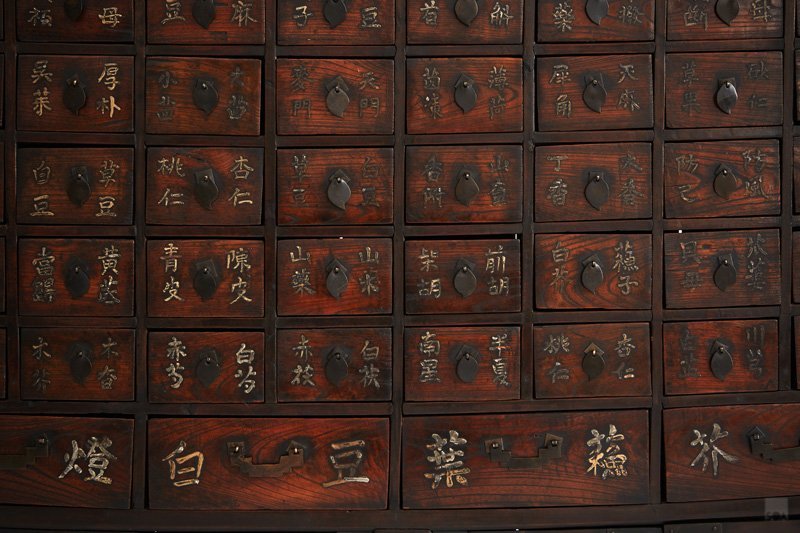
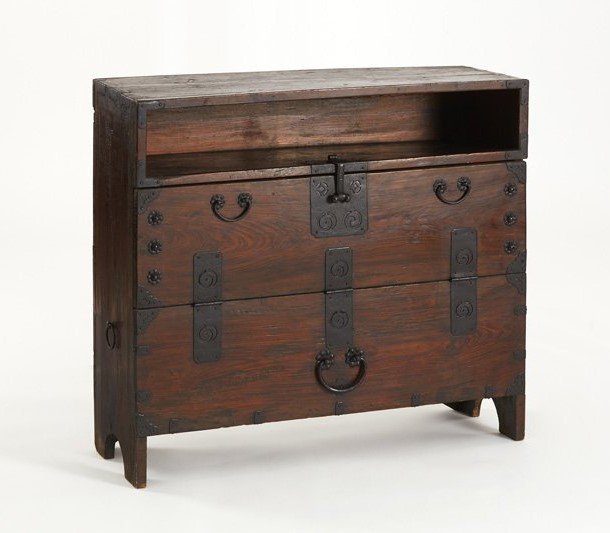
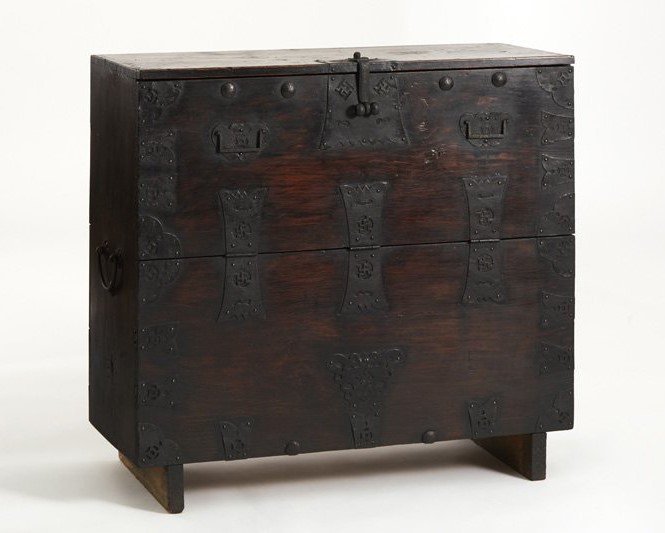
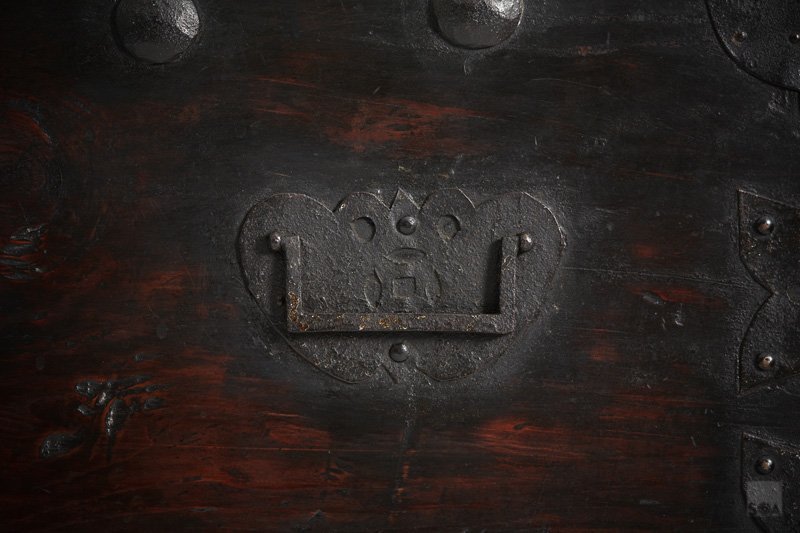
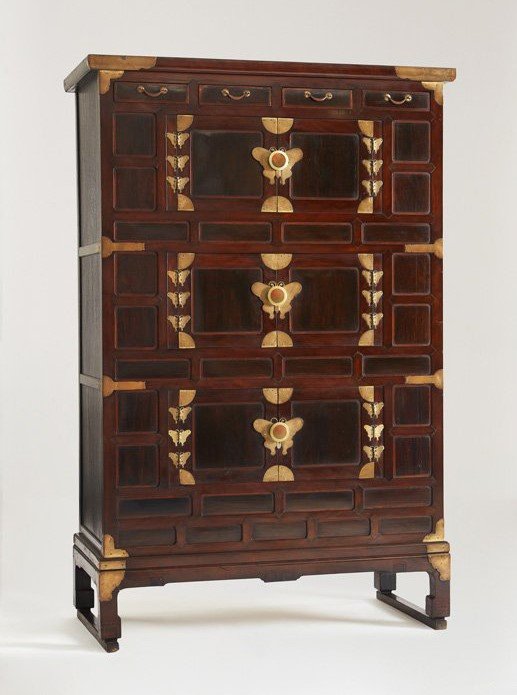
H.165cm, W. 108,5cm, D. 52,5cm. Pear tree, pine tree, zelkova tree.
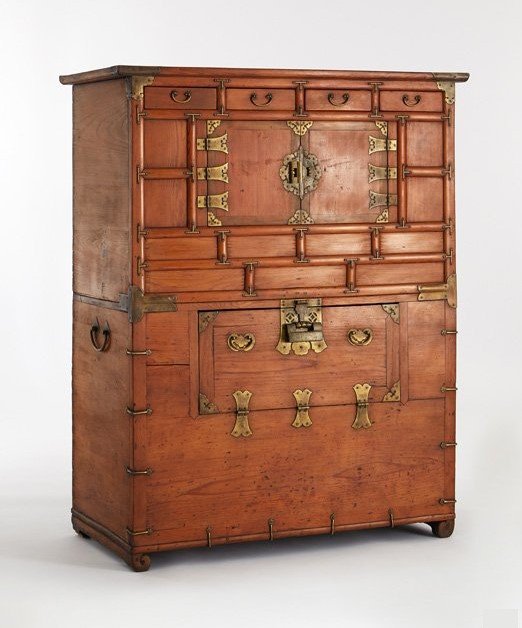
H. 134cm, W. 107,5cm, D. 51,5cm. Pear tree, pine tree, ginkgo tree.
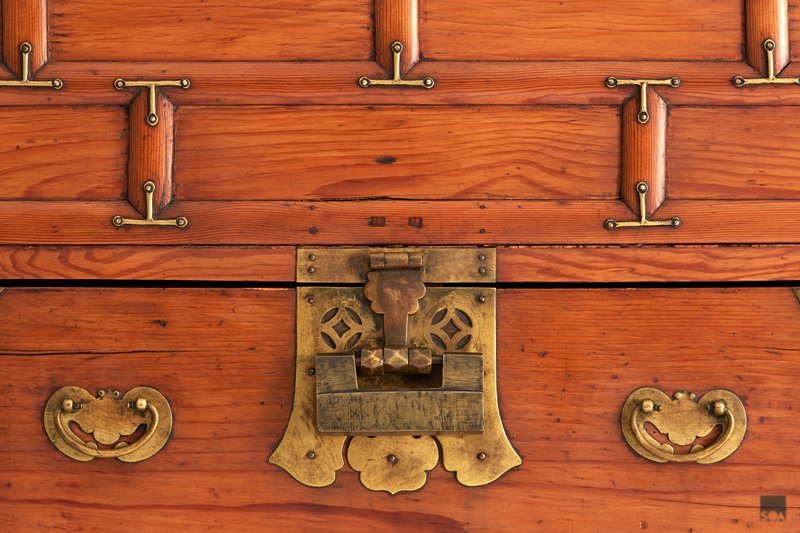
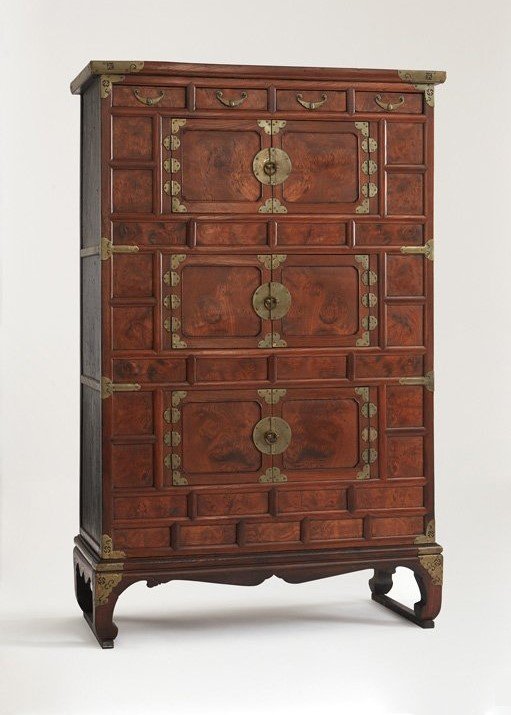
H. 170cm, W. 108cm, D. 53cm. Zelkova tree, pine tree. Gyeonggi Do province.
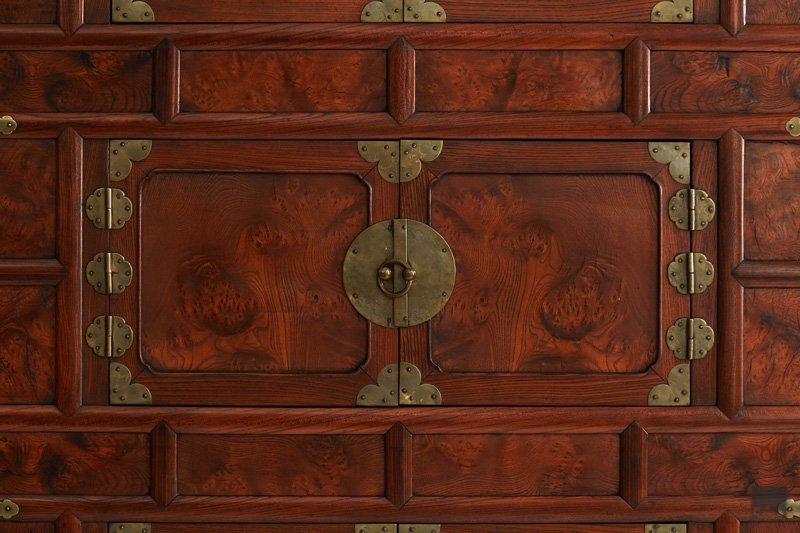
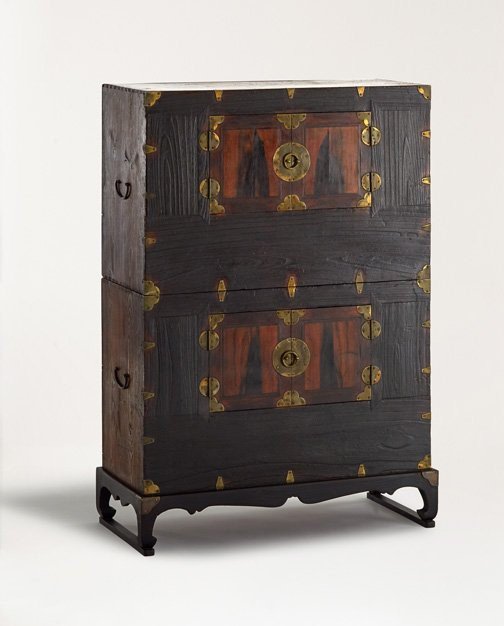
H. 113cm, W. 77cm, D. 34,5cm. Persimmon tree, paulownia tree, pine tree.
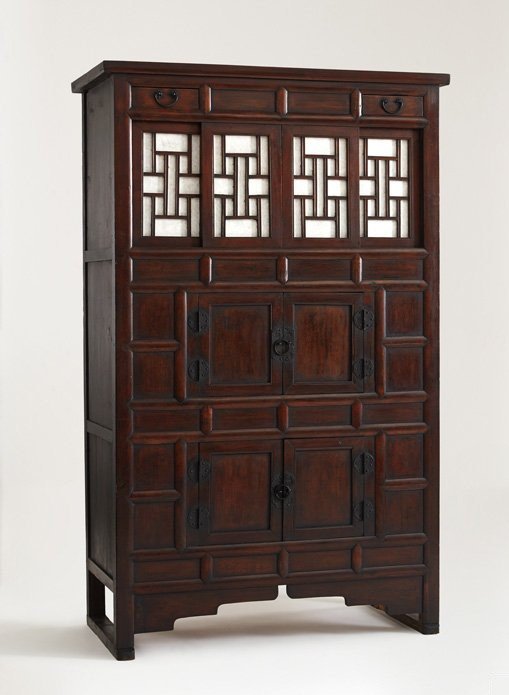
H. 157cm, W. 98cm, D. 48cm. Pine.

NATIONAL FOLK MUSEUM OF KOREA.
Najeon, Glimmer & Shine. May 19, 2023 ~ August 27, 2023.
Najeon is a decorative technique that involves using mother-of-pearl from the shells of abalones, conchs, and similar materials to create intricate patterns on lacquerware. Known for its mysterious and sparkling colors, Najeon has been cherished and admired for its delicacy and profound beauty.
Najeonchilgi, a prominent craft from the Goryeo Dynasty, persisted into the Joseon Dynasty. Not only did it diversify in types, but its use also expanded from the royal family to the general population.
You can find Najeon on various items, ranging from boxes and furniture to tray-tables and pillow ends, adding a touch of sparkle to different aspects of our lives.
The exhibition centers around the themes of “Practicality and Decoration–Talent and Craftsmanship–Sharing Memories.” It showcases Najeonchilgi from the Joseon Dynasty, along with contemporary craftworks by artisans who carry on the tradition. These artisans offer new interpretations and aesthetics to traditional materials and techniques, adding a modern twist to this timeless art form.
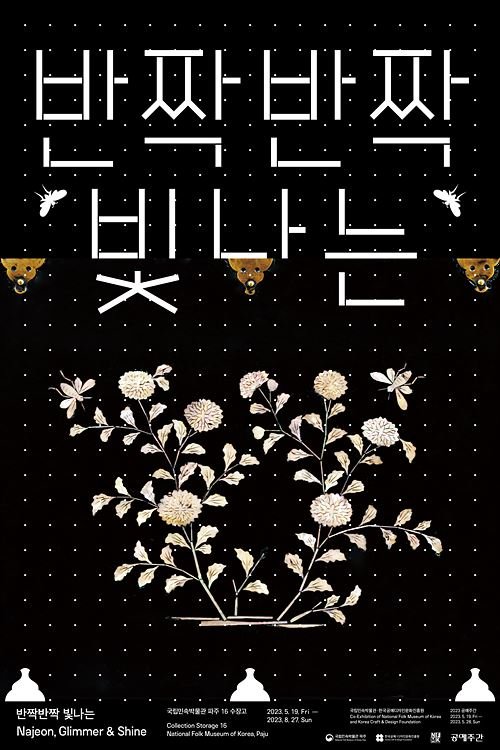
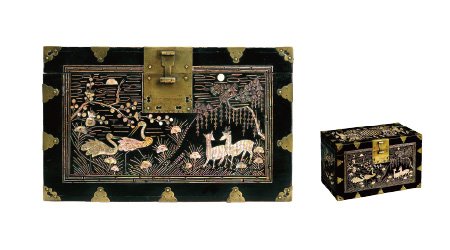
Lacquered Case with Inlaid Mother-of-pearl Longevity Design
22.8 × 21.5 × 36
조선 – Joseon Dynasty.
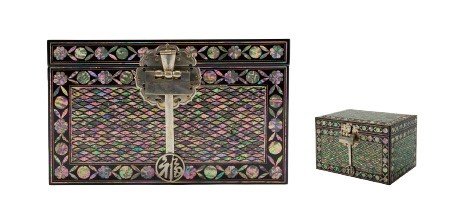
Lacquered Marriage Gift-box with Inlaid Mother-of-pearl Four Ogival-shaped Pattern
21 × 20 × 30
송방웅, 광복 이후
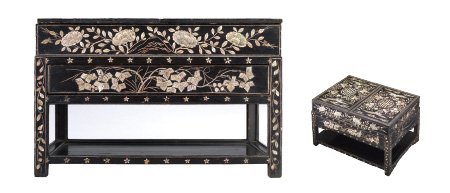
Lacquered Inkstone Table with Inlaid Mother-of-pearl
26.5 × 29 × 41.5
조선 – Joseon Dynasty.
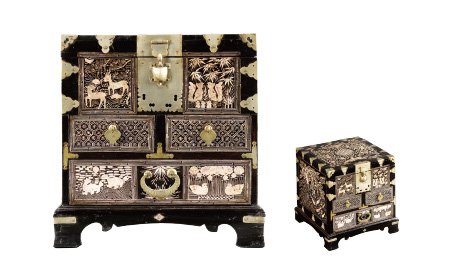
Lacquered Comb Cabinet with Inlaid Mother-of-pearl
31.5 × 30.5 × 31.5
조선 – Joseon Dynasty.
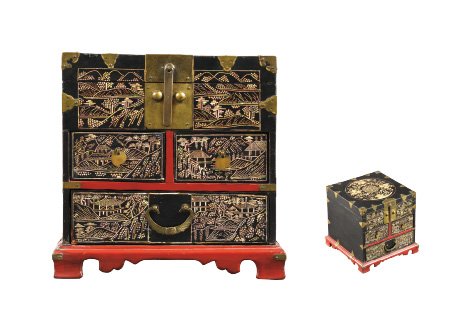
Lacquered Comb Cabinet with Inlaid Mother-of-pearl Landscape Design
30 × 29 × 29
조선 – Joseon Dynasty.
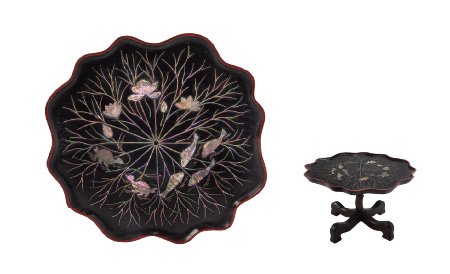
Lacquered Lotus Leaf-shaped Tray-table with Inlaid Mother-of-pearl
19.5 × 32
조선 – Joseon Dynasty.
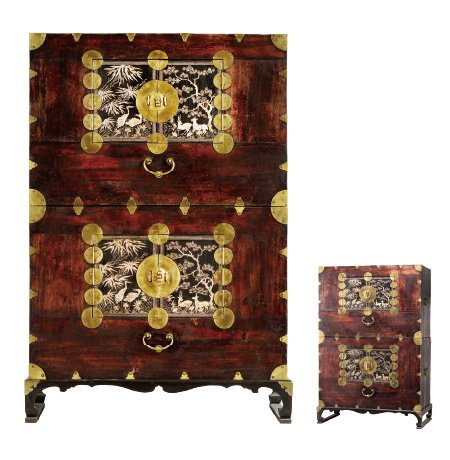
Lacquered Two-tiered Separable Clothing Chest with Inlaid Mother-of-pearl Longevity Design
126.8 × 47.5 × 87
조선 – Joseon Dynasty.
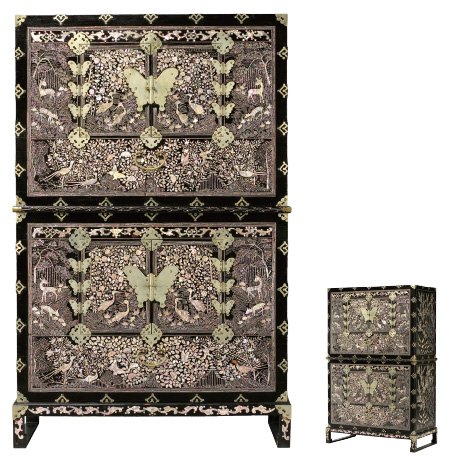
Lacquered Two-tiered Separable Clothing Chest with Inlaid Mother-of-pearl
135.5 × 45 × 87
조선 – Joseon Dynasty. 남궁호 기증
Wood Craft – Ehwa Womans University 130th Anniversary Special Exhibition.
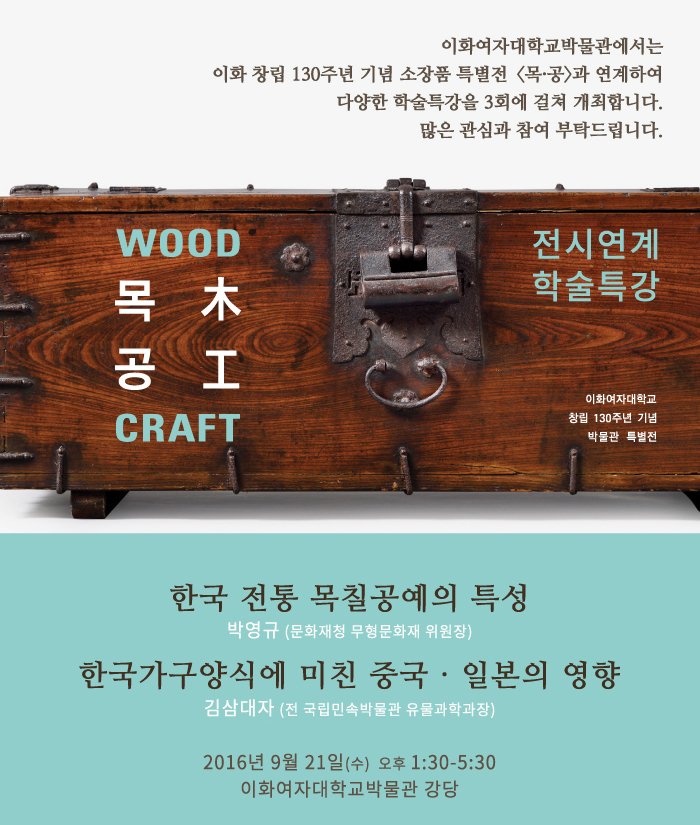
BONTE MUSEUM . Opening commemorative exhibition.
2012. 11. – Until now. Address: 69, 762 Sanroknam- ro, Andeok-myeon, Seogwipo-si, Jeju-do.
The 2012 opening commemorative exhibition “In Search of Beauty” sought to explore the natural beauty of culture, which had been obscured by traces of time, in Korea’s traditional handicrafts, which are becoming increasingly rare. Traditional handicrafts used in daily life can be recognized by looking at them even without special knowledge, and they are also materials that anyone can talk about, regardless of age or gender.
Traditional handicrafts retain traces of time, the life of a time, and dreams. Exploring our natural beauty through these universal relics is the ultimate direction pursued by the Bonte Museum.

The type of table on which food is placed is called a soban.
In traditional houses, the kitchen and dining room were far away, and brass or porcelain dishes were used.
Therefore, the small table was made of light and strong wood so that it could bear the weight while being easy to carry.
Also, since only one statue was used per person, most of them were made in small sizes.
There are various types of small tables depending on the purpose, top plate (plate that blocks and finishes the top surface of furniture), shape of legs, and region of use.
The shape of the top plate is circular and it is a disk with a relatively wide top plate.
It was produced using black lacquer, a painting method that adds iron oxide to raw lacquer to create a black color.
Black lacquer, like red lacquer, could only be used in the royal court or noble families, so it appears to have been used by noble families.
This black lacquered soban has a very simple circular line engraving on the top plate, and is characterized by quite ornate carved flower patterns on the cloud and four legs.
Each leg has a peduncle that connects the two legs.
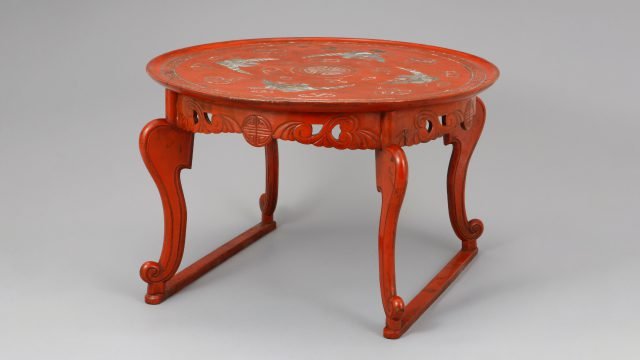
It is a soban made from a single plate without a rim on the edge of the top plate, and the entire table is painted in red.
Juchil is a painting method that adds pearl-colored paint to transparent raw lacquer to create a red color, and was only used in the royal court or noble families.
The mother-of-pearl and lacquered crane pattern disc is decorated with mother-of-pearl, with a su (壽) octagon at the center of the top plate and four crane patterns surrounding it.
The Chinese character Su (壽) was engraved on the roof that connects the top and legs, and an arabesque pattern was engraved around it.
The four legs are foot-shaped legs with elegant curves.
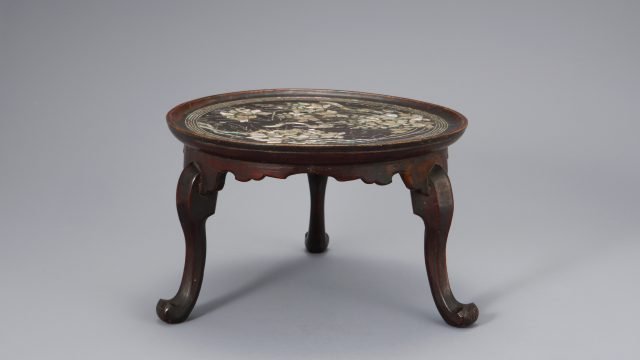
It is a soban with a circular top plate and a delicate mother-of-pearl decoration on the inside.
It is decorated with mother-of-pearl and is decorated with grape patterns that symbolize fertility by producing many fruits.
The overall wood grain is naturally revealed thanks to the transparent raw paint.
Unlike the typical table with four legs, it is characterized by having three legs, and the elegant curves extending outward resemble the legs of a tiger.
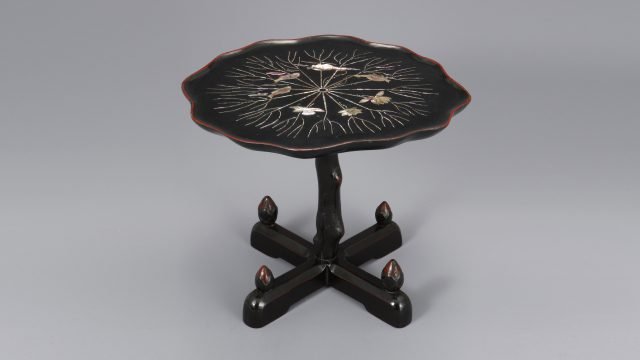
Iljuban is a small table with one pillar and is called Iljuban or Danggakban.
Because the strength of the supporting pillars of this type of table was weak, it was used for placing a single bowl containing carefully prepared food such as fruit, medicine, and refreshments rather than for eating.
This mother-of-pearl lotus and turtle patterned lotus leaf table is decorated with mother-of-pearl, with delicate lotus veins and turtle and fish patterns that seem to be embroidered on the fabric.
The overall design is painted black, and the characteristic feature is that there is a thin line of vermilion paint along the edge of the top plate.
Below the lotus leaf-shaped half, there is one stem-shaped leg and four feet decorated with lotus peaks.
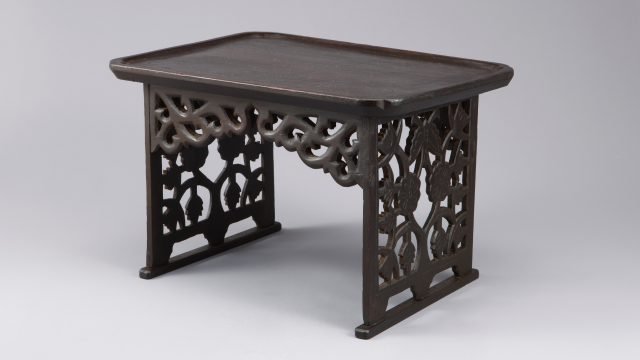
Haejuban is a small table made in the Haeju region of Hwanghae Province. Unlike a typical small table with four legs, the Haeju-style small table consists of two wide engravings.
The carvings that form the legs extend outwards in a slightly eccentric manner, and can receive more load at the top than a vertical composition, giving a sense of visual stability.
This Haejuban has butterfly and chrysanthemum patterns engraved on two wide carvings, and is also characterized by an arabesque pattern engraved on the hinge that connects the two legs and the top.
This is a Haejuban that adds extravagance and decoration through the delicate openwork of the wood.
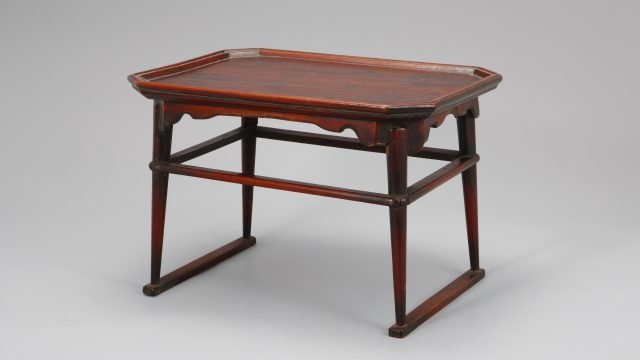
Najuban is a small table made in Naju, Jeollanam-do.
It has a similar shape to the Tongyeong board, but the difference is in the way the rim, which is the border of the top plate, is manufactured and attached separately.
Therefore, compared to small tables in other regions, the Naju table has a thick rim and has the advantage of being able to be manufactured in large sizes because the rim prevents the wood from bending.
This Naju table has minimal decoration and preserves the wood grain to give it a rustic feel, and like a regular Naju table, it has cylindrical legs.
Najuban is especially characterized by the formation of four bridges.
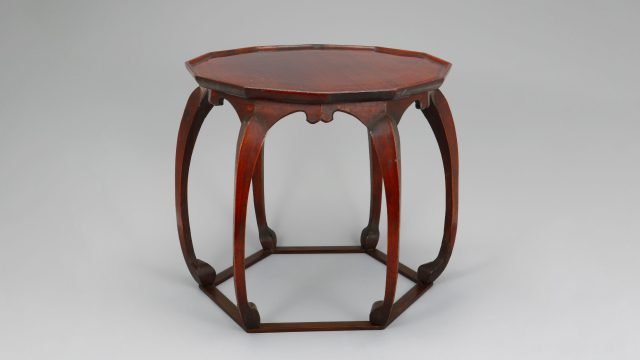
This table is called Gaedari Table or Gujokban because the legs of the table are like the legs of a dog.
Gujokban is mainly produced in the Chungju region, so it is also called Chungjuban.
The leg shape of this small table, which resembles the legs of a dog, also appears on the legs of gyoza statues and jangwa nong from the Joseon Dynasty.
The dodecagonal nine-foot plate has a twelve-angled top plate, and is characterized by being carved as a whole plate together with the top plate, rather than having a separate rim around the top plate.
The foot that touches the floor has a footrest that connects the six legs and gives a feeling of stability.
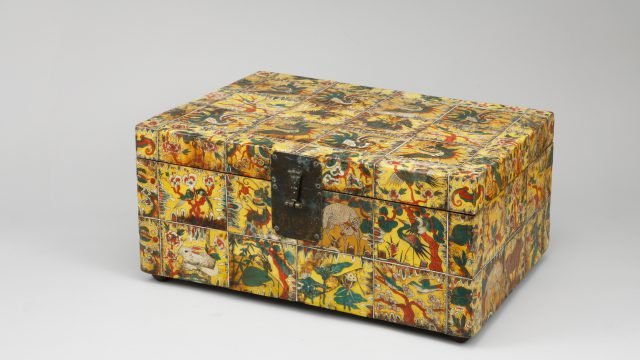
Hwagak is a technique of drawing pictures on the back of a paper-thin ox horn paper, and is characterized by its brilliant colors.
This Hwagak auspicious pattern box was made using the Hwagak craft technique and was used to store small items.
The box was divided by creating vertical and horizontal dividing lines on the cover and body, and materials symbolizing ordinal numbers and auspicious signs, such as cranes, turtles, and dragons, such as cranes, turtles, and dragons, are depicted in great detail within each divided rectangular screen.
It is characterized by overall unity as the cover and body compartments are connected.
There is a rectangular iron lock plate with no special decoration in the center of the front.

Unlike a cabinet, a Nong is a type of storage furniture with separate layers and is used to store clothes.
It was mainly placed in the master bedroom, which was the living space of women, and was used by stacking several boxes on top of each other.
Nong is a representative wedding item used by the common people, and was a piece of furniture that was sensitive to trends and reflected the times.
This vermilion two-level cabinet has expensive red vermilion paint and delicate mother-of-pearl decorations throughout, and appears to have been used by a noble family.
The front is decorated with the ten symbols of longevity, such as the sea, crane, mountain, water, and turtle, the side is decorated with a waterside scene with fish and strange stones, and the legs are decorated with delicate mother-of-pearl chrysanthemum patterns.
The fittings at each corner adds to its splendor, and the legs have bat wind holes.
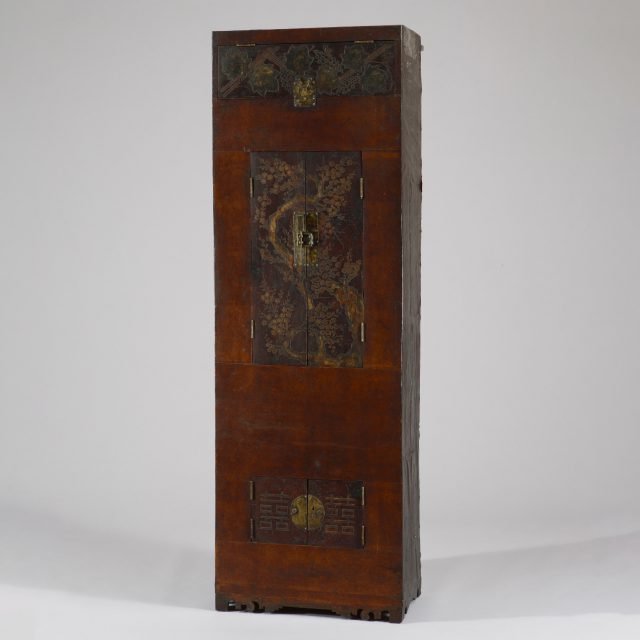
A clothing rack is a clothing storage furniture that stores clothes, clothes, and it appeared in the late Joseon Dynasty with the spread of Western suits.
Unlike jang (欌) and nong (籠), where clothes are folded and stacked for storage, there is a stand inside to hang clothes, preventing them from getting wrinkled and making it easy to take them out.
This plum blossom-patterned Jizo clothing hanging cabinet is decorated with a vine on the top, a plum tree in the center, and a symmetrical double xi (囍) letter on the bottom. This chest was covered with paper.
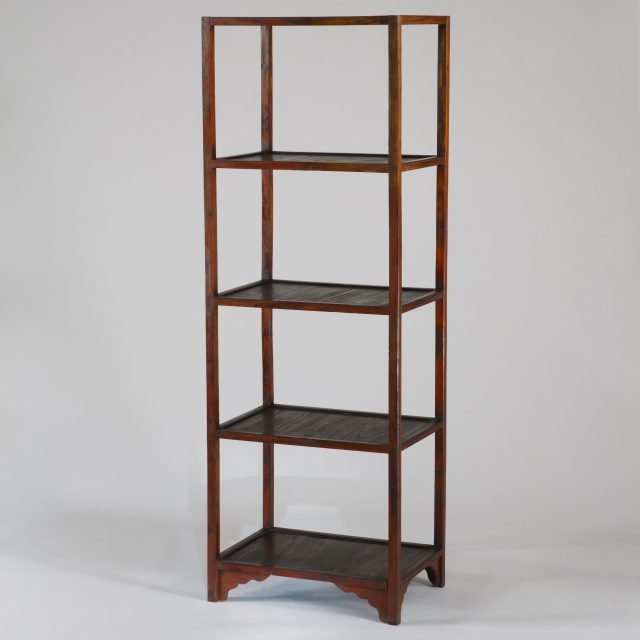
Sabangtakja is a multi-tiered shelf that is open on all sides, and is a piece of furniture made up of thin pillars and tiered boards.
It usually consists of three or four floors, and has a simple structure with linear elements that give it a simple, stable, and comfortable feel.
Books, stationery supplies, or objects for appreciation were displayed on each floor of the four-way table, and a cabinet with a swinging door was installed on the bottom floor to enhance its practical function.
This shelf is made as simply and frugally as possible, preserving the feel of wood without any decoration or painting.
The legs of the four-layer table have vents.
“COMPANIONS ON THE ROAD TO THE OTHER SIDE”
Through the 2015 special exhibition “Companions on the Road to the Other Side”, we provided an opportunity to experience our traditional funeral rites, which are gradually disappearing due to the traces of time. I wanted to find the original beauty in the bier, which plays an important role in the last ritual of a person’s life, and the kkokdu, which reflects the thoughts of the departed person who is the main character of the bier. For our ancestors, death meant ending life in this world and going to the next world, that is, the other side. The bier that helps the person make the final journey in this world, and the kkokdu that decorates it more beautifully and show pleasant facial expressions and gestures, act as companions so that the path to the other side is not lonely. In this exhibition, we hope you can feel the beauty of bier and kkokdu, which have become our companions so that we can begin life in another world.
Apparently still on view at the BONTE Museum. 69, 762 Sanroknam- ro, Andeok-myeon, Seogwipo-si, Jeju-do.
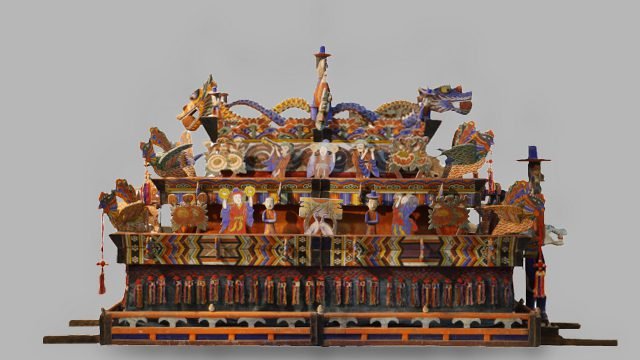
There are variations in size based on the family’s circumstances and status, as well as diverse styles depending on the region. However, they are typically crafted in the architectural style prevalent during that period, reflecting the sincere thoughts of descendants who wish to provide a luxurious setting even for the final moments of their loved ones’ lives.
Typically, the deceased is placed at the bottom of the bier, an altar is constructed, and various types of kkokdu (decorative figurines) are attached to convey the feelings of those mourning. At the top, a ridge and a water board are positioned. Bangsangssi, a protective deity, is affixed to the front of the bier, serving as a guardian against evil spirits.

The existing water boards serve as crucial cultural artifacts that illustrate how our ancestors recognized and employed art to convey their worldview on death.
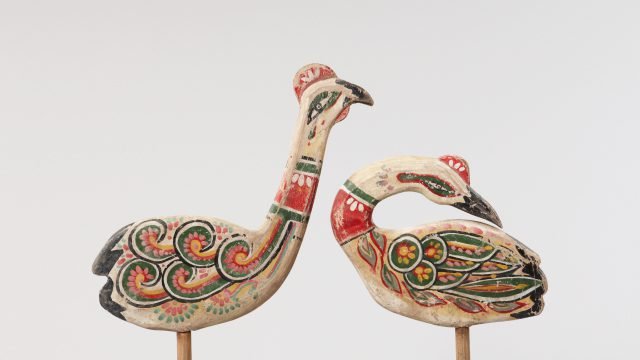
The whimsical beauty stands out, reflecting the characteristics of Korean art from the late Joseon Dynasty, evident in folk paintings and items like lion statues and tiger representations. In many instances, these figures took on human-like appearances with assigned roles, and there were numerous cases where the bier was adorned with distinct animal statues.
In folk beliefs, the tiger symbolizes the ruler of evil spirits and malevolent forces. It is utilized prominently in the form of a guardian spirit, serving to repel evil spirits and safeguard the departed.
The phoenix, alongside the dragon, is often employed as a symbol signifying kings and queens. Irrespective of one’s social status, individuals could aspire to enjoy the same regal luxury on their final journey. While cranes also exist, they are perceived as mystical and spiritual beings, symbolizing good fortune, nobility, and fidelity. Typically adorned with a white body, a red crown, a long neck, and sculptural beauty, cranes contribute to the overall symbolism.
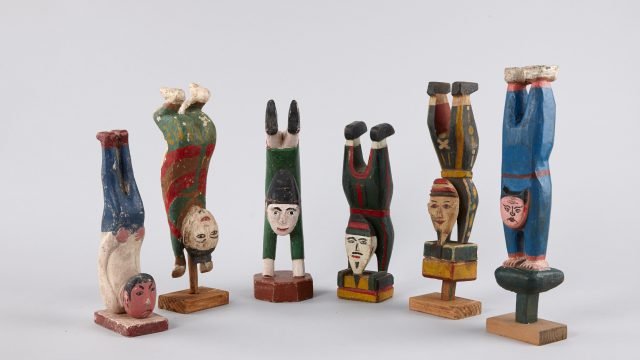
The human kkokdu adorning the bier typically portray a child, a sage, a scholar, or a clown. Similar to a child making offerings to Buddha, it wholeheartedly serves the departed and engages in playful activities to alleviate any boredom or fear during the journey, such as dancing and performing tricks. In this context, Kokdu demonstrates that death is not solely viewed as a source of sadness but as a desire to guide the deceased to a better place.
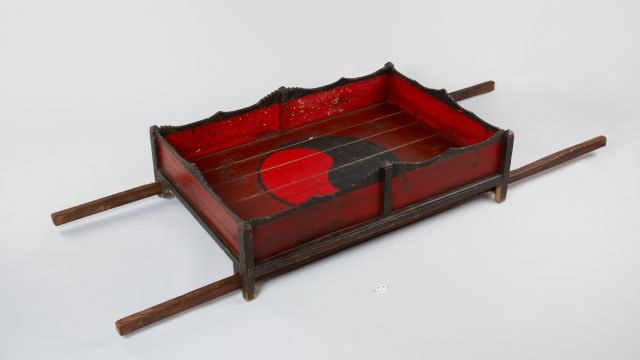

A bier is a general term for transportation tools used in funerals, and among them, a palanquin carrying items related to the soul is called a Yeongyeo. The Yeongyeo is crafted in the form of a small palanquin designed to carry items such as spirit bags, spirit tablets, and sacred instruments associated with the deceased’s soul. It is also referred to as ‘yoye’ when carried by two people at waist height and is known as ‘yeongcha’ in literature.
In our traditional beliefs, when a person passes away, the soul and the corporeal body separate, with the ‘soul’ returning to the sky and the ‘white’ returning to the earth. During a funeral procession, the spirit moves ahead of the bier, signifying that the spiritual essence, separated upon death, precedes the physical body.
Influenced by Buddhism and Taoism, symbols like lotus flowers were frequently incorporated, adorned in various colors corresponding to social status.
KOREAN FUNERARY FIGURES: COMPANIONS FOR THE JOURNEY TO THE OTHER WORLD.
University of Illinois Urbana Champain. College of Liberal Arts & Sciences. Spurlock Museum of World Cutures. 600 S. Gregory St. Urbana, IL 61801. USA. 3/2/2010–7/11/2010.
Death is a given of the human condition that touches everyone in every age. In almost all cultures, the trauma of death is countered by artistic expressions of great richness. In Korea during the nineteenth and early twentieth centuries, artisans carved wooden figures—called kokdu 꼭두—which were used to decorate the funeral bier.
This exhibition features a collection of 74 kokdu that offer rare insights into characteristically Korean attitudes towards death. The figures of acrobats, clowns and whimsical mystical animals included among kokdu expresses a joyfulness that may seem incompatible with mourning, but the inclusion of such figures actually reflects a sophisticated appreciation of the fleeting nature of all experience. The use of kokdu in funeral rites also expresses a deeply held wish that the transition to the other world will occur in an atmosphere of joyful celebration supported by many helpers.
The kokdu decorated the funeral bier as it performed its practical function—conveying the coffin of the deceased to the burial ground—and its symbolic function, as a temporary home for the deceased and a representation of the great distance between life and death.
All of the objects in this exhibition are on loan from the permanent collection of the Seoul-based Ockrang Cultural Foundation. Support for this exhibition was provided by the Korea Foundation.
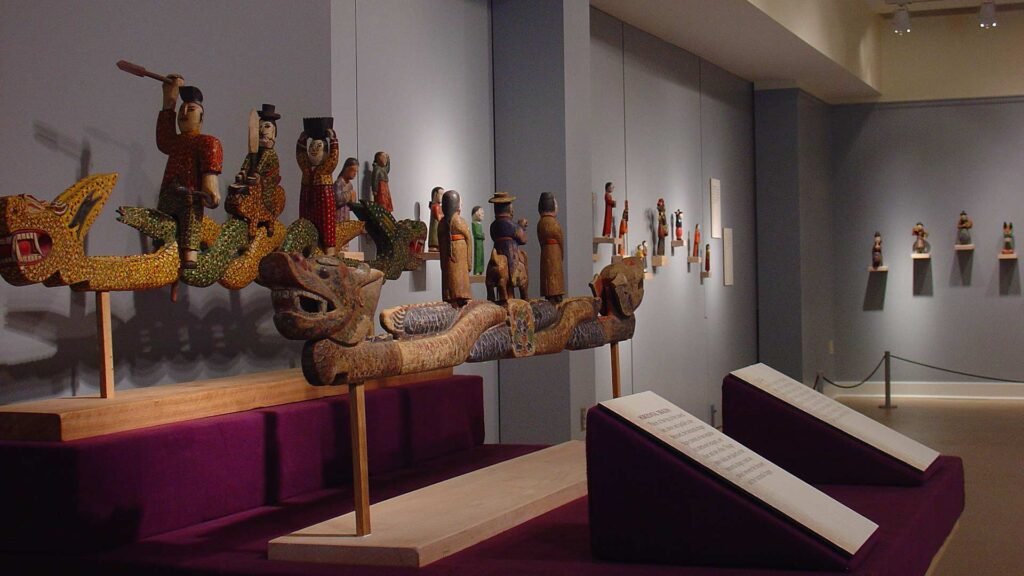

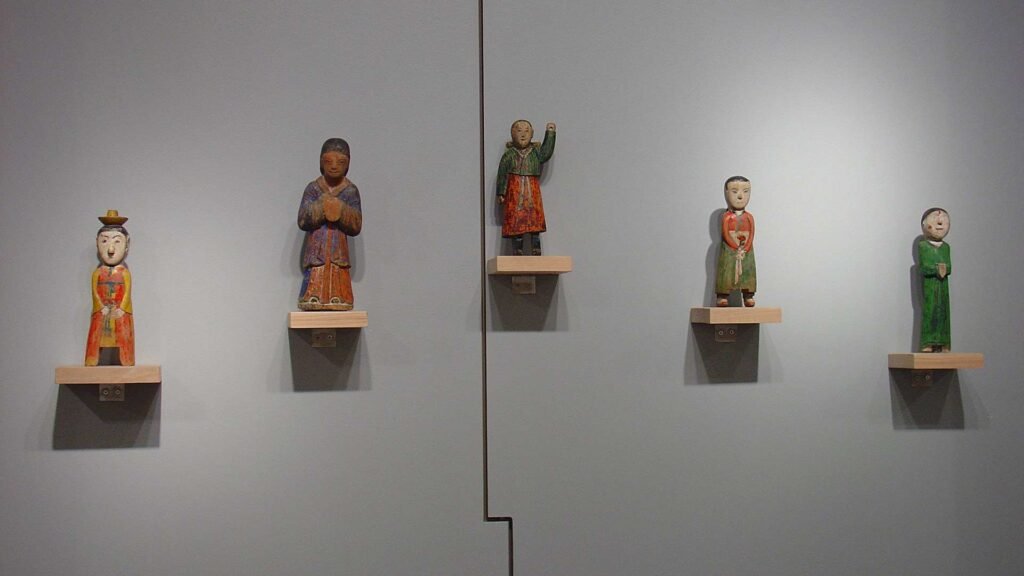

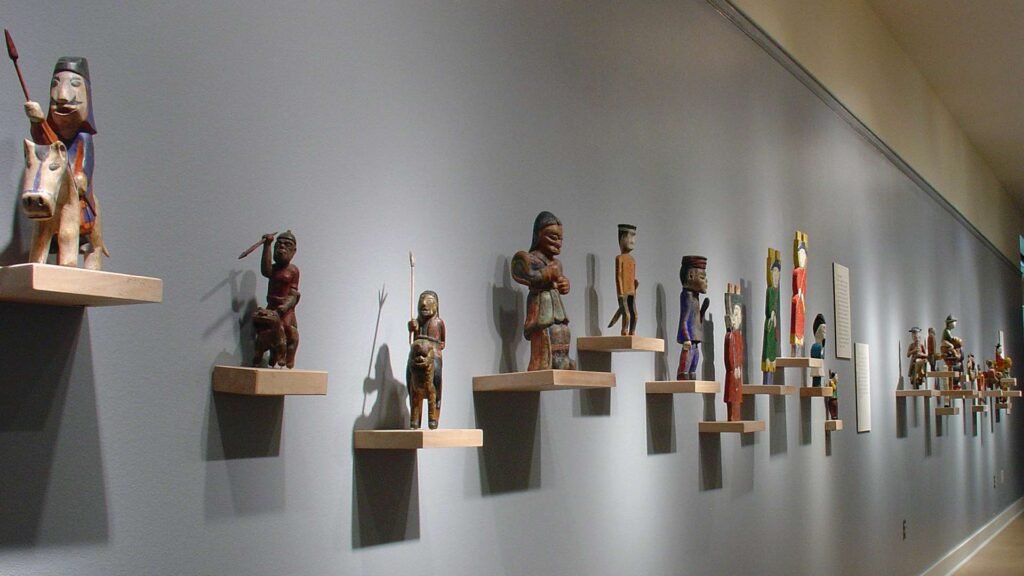
PATTERNS ON KOREAN WARDROBES (1920 – 1960).
SOOKMYUNG WOMEN’S UNIVERSITY MUSEUM. June 7th 2023 – March 29th 2024.
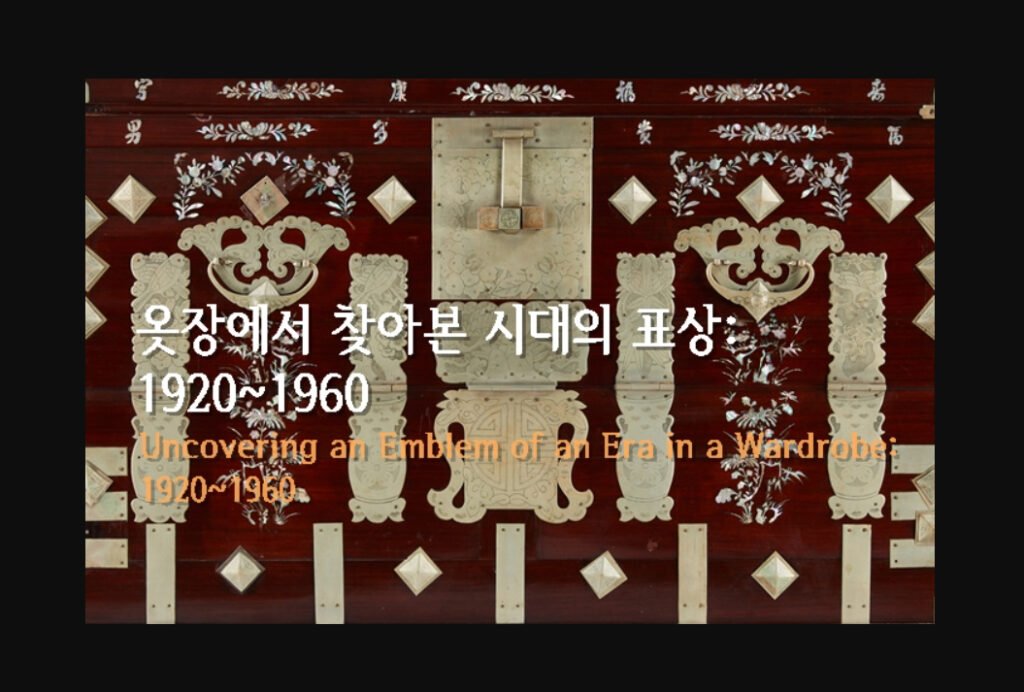

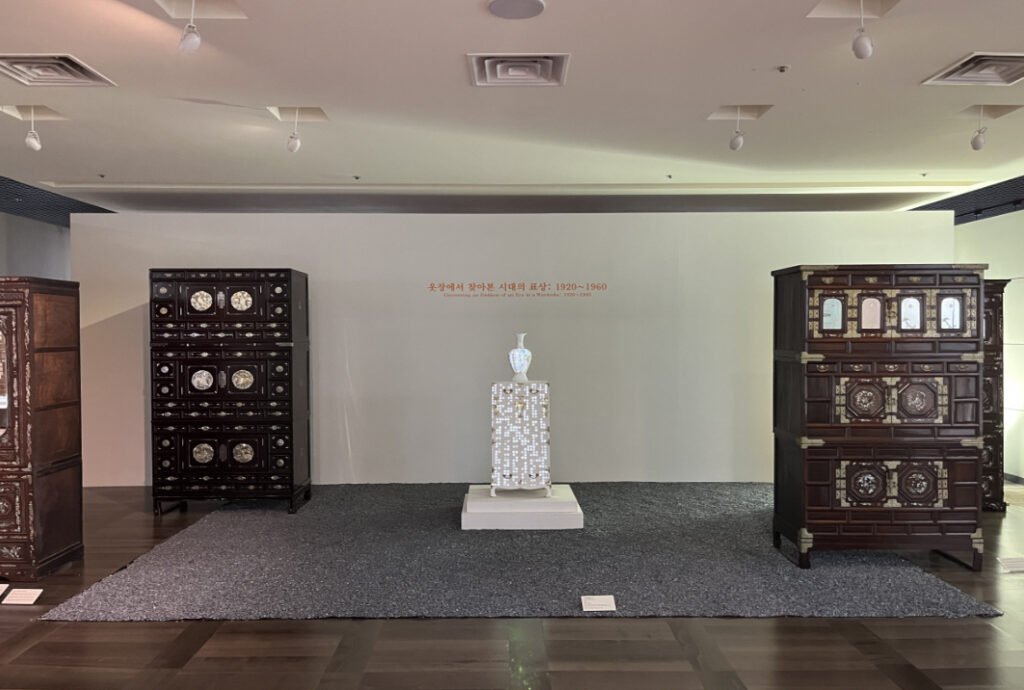
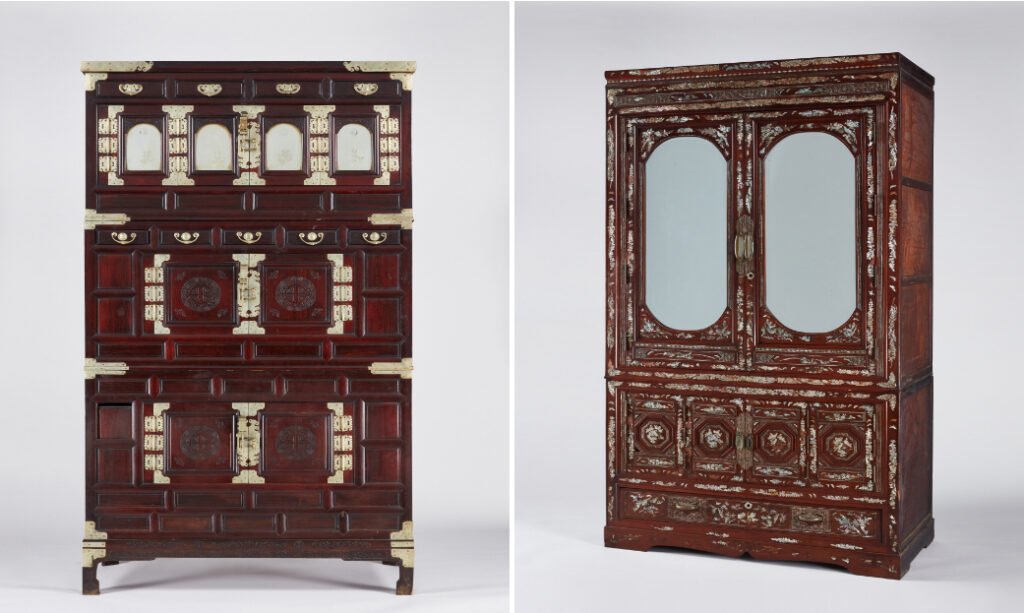
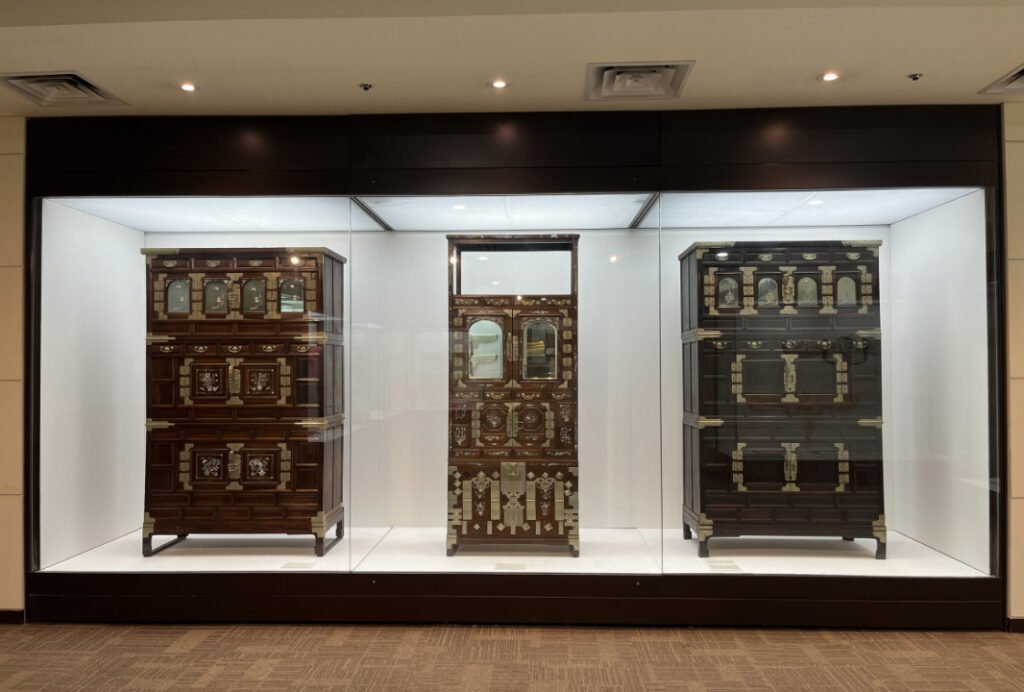
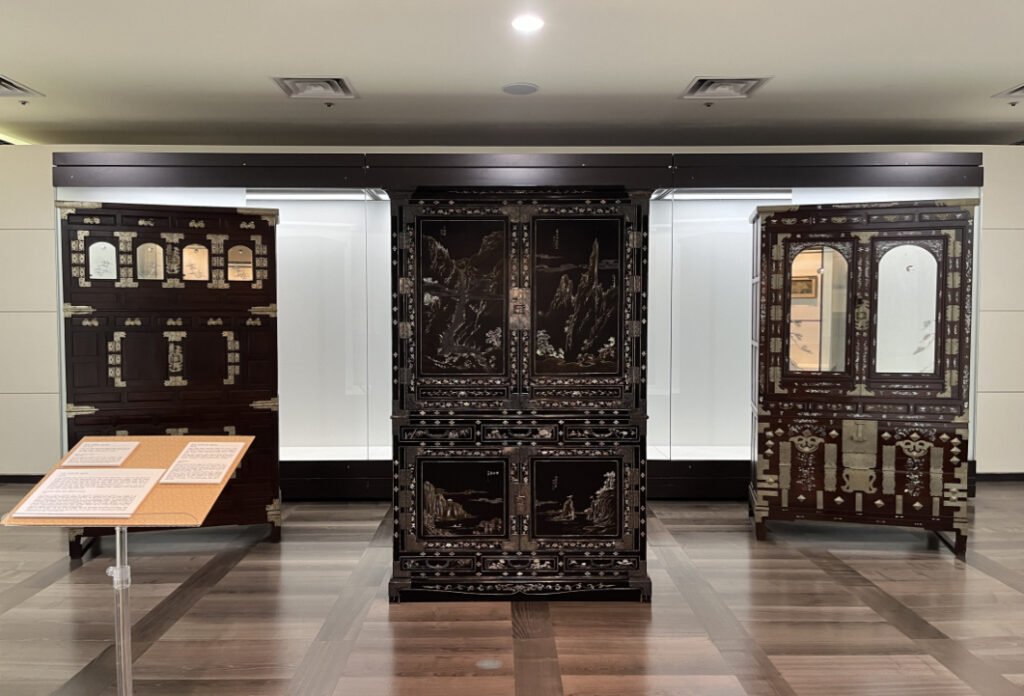
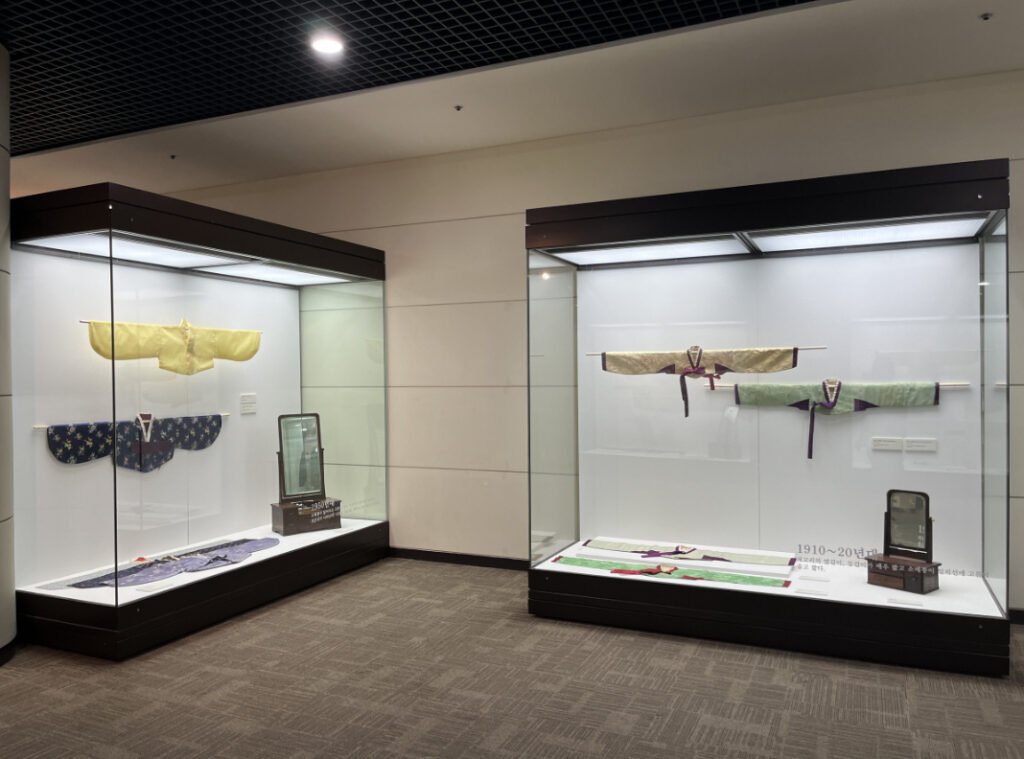
Commemorating the 100th anniversary of its foundation
Soetsu Yanagi and The Korean Folk Art Museum. June 15th (Sat) to August 25th (Sun), 2024.
The Japan Folk Craft Museum. 4-3-33 Komaba, Meguro-ku, Tokyo
The Asakawa brothers, Noritaka and Takumi, and Soetsu Yanagi found the beauty in crafts of the Joseon period, and established Korean Folk Art Museum in present Seoul. This year marks the 100th anniversary of its foundation. The exhibition follows the footsteps of the museum, display the works which were collected at that time as well as documents related to the museum, and verifies the importance of Korean Folk Art Museum, which was the first Korean crafts museum in the world.
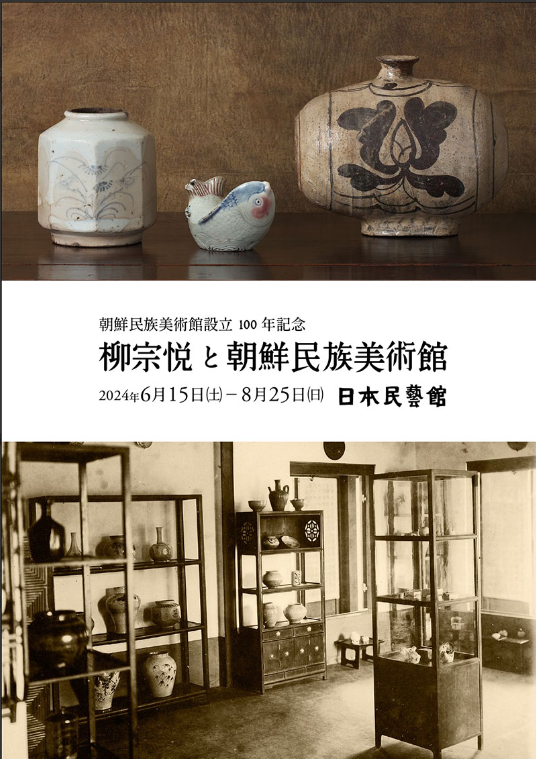

Joseon period, 19th century.
h.12.1cm. (former collection of Soetsu Yanagi and Korean Folk Art Museum)
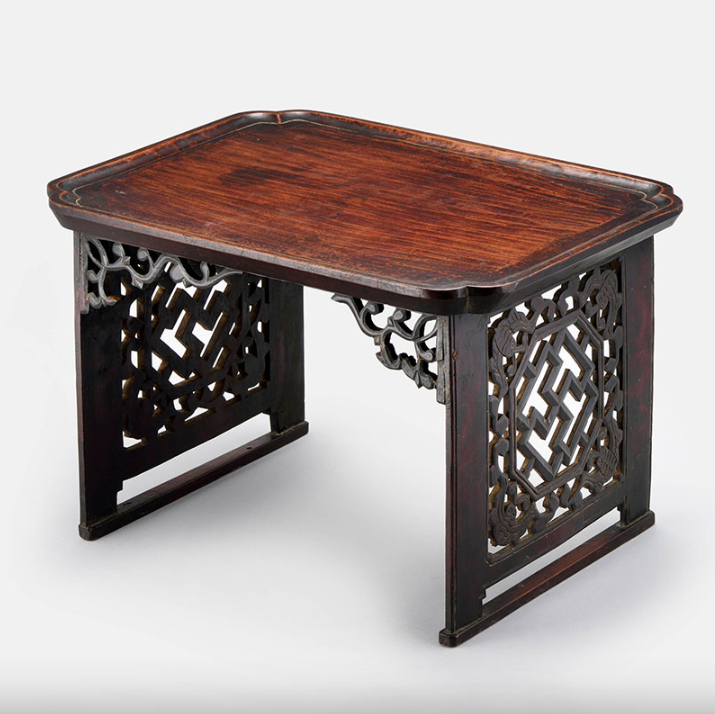
Joseon period, 18th to 19th century.
w.48.0cm. (former collection of Korean Folk Art Museum)

